As part of their work this summer, CHM curatorial research interns Tori Harris and Neive Rodriguez have compiled a list of resources on Chicago’s West Side. Both are students at the University of Chicago. Harris is studying anthropology and creative writing, and Rodriguez is studying history.
On August 8, 2024, the Chicago History Museum is hosting a screening of the short documentary Love Letter to the Westside (2024). In the words of the filmmakers:
“Our film is the capstone project of our partnership with the Community Leadership Fellowship. We, Jay Simon, Michelle Williams, Drea Slaughter, Ant Jones, and Corey Dooley, wanted to highlight the West Side experience and how Westside communities of Chicago were often absent from conversations surrounding Chicago history. In documenting the verbal history of a diverse group of Westsiders, we were able to offer our contribution to preserving Chicago’s vibrant and rich Westside roots and future. We encourage all Chicagoans to prioritize visiting and learning more about the Westside (the best side) of Chicago.”
In preparation for this event, we’ve compiled a list of resources about the city’s West Side from the Chicago History Museum’s collections and beyond.
For the Mapaholics: City of Chicago Sanborn Fire Insurance Maps
Originally created to evaluate buildings for insurance policies, Sanborn Company maps document cities across America from the 1870s until 1977. By tracking how a neighborhood changed over time, historians can learn many things about it: demographics, wealth, population numbers, and more. This website has links to all the Sanborns of Chicago online for free and public use.
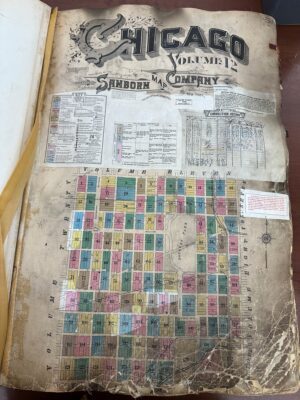
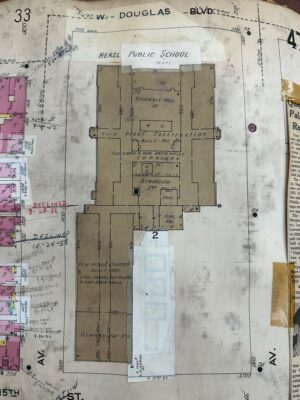
Pictures taken from Sanborn Map Company, Chicago Volume 12, originally published in 1923 and corrected to 1949. These are the physical maps from CHM’s research collection at the Abakanowicz Research Center. If you look closely, you can see the original “copy and pasting” method–quite literally, copying a piece of a map onto a separate sheet of paper and pasting it over the old part of the map with glue.
For the Visual Learners: Historical Photos from the CHM Images Archive
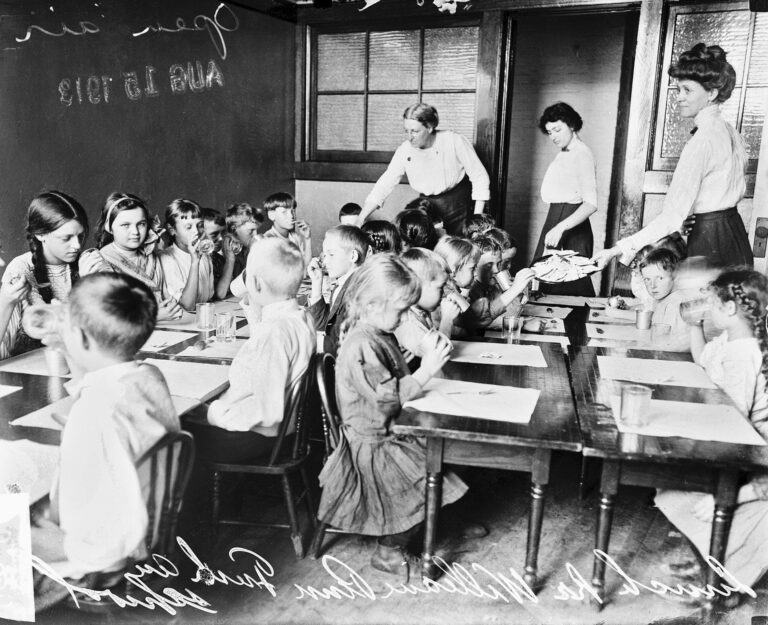
Children eating lunch at the William Penn School, an open air school at West 16th Street and South Avers Avenue in the North Lawndale community area of Chicago, August 16, 1913. DN-0060920B, Chicago Daily News collection, CHM.
We’ve gathered images from across the Museum’s collection into this gallery for your viewing pleasure. These pictures include scenes from Civil Rights Movement actions in the Austin neighborhood to snapshots of everyday life in Humboldt Park.
For the Manuscript-Mesmerized: The Marillac House, the Greater Lawndale Conservation Commission, and the Lawndale Community Committee Records
Chicago’s West Side has long been a site of community activism, driven by both religious and secular organizations.
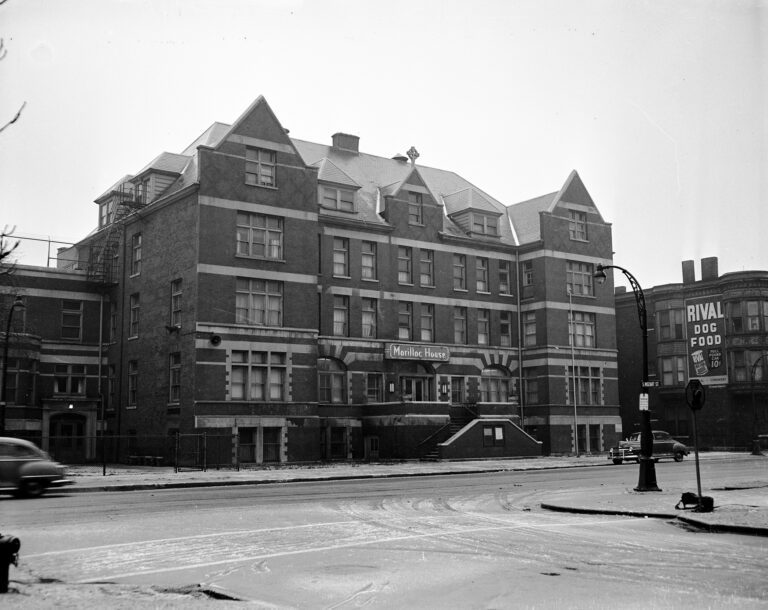
Exterior view of the Marillac House on West Jackson Boulevard, Chicago, 1949. ST-17600027, Chicago Sun-Times collection, CHM.
The Marillac House was a religious organization dedicated to alleviating poverty and other social ills in the West Side. Made up mostly of nuns such as Sister Mary William concerned for the deep-seated issues they saw in their neighborhood, the Marillac House ran programs and participated in protests across the city for integrated housing and schools. Alongside Marillac House, clergy at St. Agatha’s Parish in North Lawndale supported the fight for Civil Rights. One such clergy member was Father Daniel Mallette, who joined forces with nuns from Marillac House and beyond to picket the Illinois Club for Catholic Women for its refusal to admit Black members.
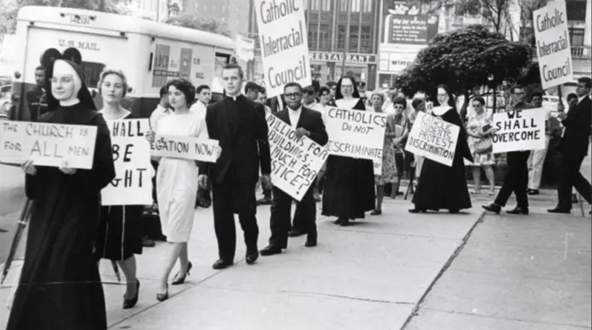
Mallette protesting outside of the Lewis Towers, location of the Club. Unsurprisingly, Mallette faced criticism for his actions. “I think it is very dangerous for the Catholic Church to get entangled in politics,” one angry “ex-member” of St. Agatha’s warned Mallette in a letter. From the Chicago Daily News, July 2, 1963.
Fighting side-by-side with the Marillac House and St. Agatha’s, secular organizations such as the Greater Lawndale Conservation Commission (GLCC) and the Lawndale Community Committee (LCC) were dedicated to improving life in Lawndale and the greater Southwest Side. The GLCC served as a liaison between their disparate block clubs within their community and between the community to the City of Chicago social councils, whereas the LCC was more concerned with campaigning for housing and investment in Lawndale.
The records of the Marillac House, the personal papers of Father Mallette, the materials from the GLCC, and the materials from the LCC can all be found in the Abakanowicz Research Center at the Chicago History Museum. The interview with Sister Mary William can be found in the online records of the Studs Terkel Radio Archives.
For the Future-Oriented: The Soul City Corridor Project
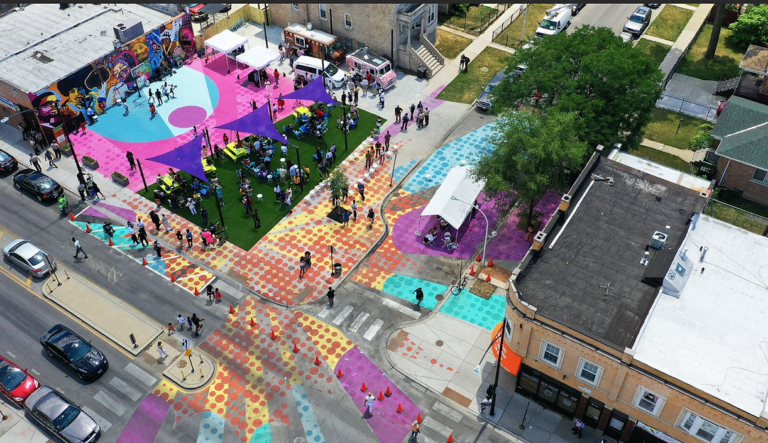
An artistic imagining of Soul City Corridor. Already, the City of Chicago has started revitalizing Chicago Avenue to prepare for the incoming Black-owned businesses and community resource centers.
The Soul City Corridor aims to create a celebration of African American culture, business, and ingenuity in the heart of Austin. Over the next 15 years, Chicago officials aim for Austin to become a Chicago community enclave similar to Little Italy, Ukrainian Village, or Chinatown. To learn more, check out the Austin African American Business Networking Association website or the project plan and proposal for more details of what it will look like in the coming years.
We hope to see you at the viewing on August 8! Until then, check out some of the resources that helped inspire the film:
- Forty Blocks: The East Garfield Park Oral History Project
- 40 Blocks – The East Garfield Park Oral History Project documentary film
- “West Side Voices” in Chicago History magazine